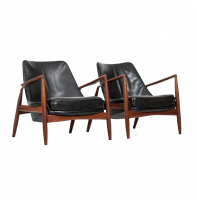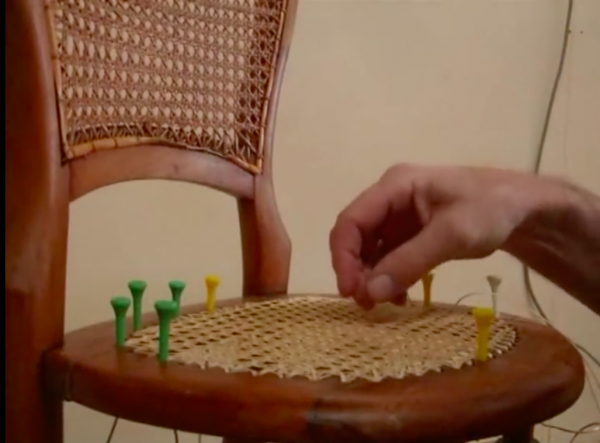For a free, no-obligation estimate please email us at [email protected]
There are two main types of cane - ready-woven (sometimes known as sheet caning) which comes on a roll and is glued into your chair seat or back, and hand woven cane, which is threaded, as the name suggests, by hand, through the holes around the edge of the seat frame or other area that needs caning. You cannot choose which method to use; it’s based on how your piece was originally manufactured.

To calculate the cost of your seat or other panel, simply count the holes around the edge of the frame - not the holes that the pattern of the cane makes - just the drilled holes around the edge through which the cane is threaded. The dimensions of the seat or other panel are not relevant. Once you've ascertained how many holes there are, let us know and we'll give a precise price.
nB. For Bergére chairs and sofas, the sides and back can sometimes share holes - which can mean that although only an arm may be damaged, it might be impossible to recane without also doing the back and other arm. This isn't always the case, but it's as well to bear in mind.
There is also a technique known as ‘blind' caning which means that the holes are not drilled completely through the frame - in this case, the cost per hole increases a little.
If your chair has a medallion in the centre of the back panel, then this is a little trickier to carry out. You need to count the holes around the medallion, as well as those around the outer frame of the chair and them together.
If you would like your newly caned seat or panel to look a little less new and better blend with other, original areas, we can do this for a small additional charge.
Several other things to bear in mind...
Occasionally, when the old cane is removed, we find that it was the cane that was actually holding the frame together. In this case, some remedial repair work will be necessary before the recaning can be carried out. We will then make a charge to dismantle, reglue and reassemble the frame. If any joints are actually broken, this can add to the cost. Caning puts a huge amount of stress on the frame and the joints need to be strong and firmly glued before we can proceed.
Our caner, based out in the sticks, comes to London once a month or 6 weeks to collect any work that needs doing. That means that if we have your chair in our workshop coinciding with his visit, the turn around time is usually about month or so. However, if he’s recently visited us the lead time will be longer, for obvious reasons.
For Breuer-style cantilever chairs of the type pictured below, we only require the seat or back that you’d like to have caned, not the complete frame. They are removable from the frames by unscrewing the 4 retaining screws.
All Restoration






